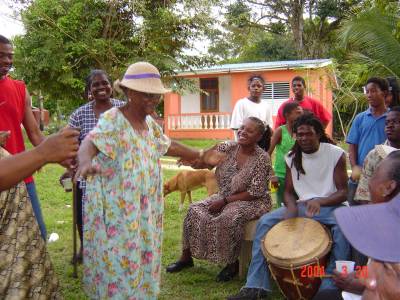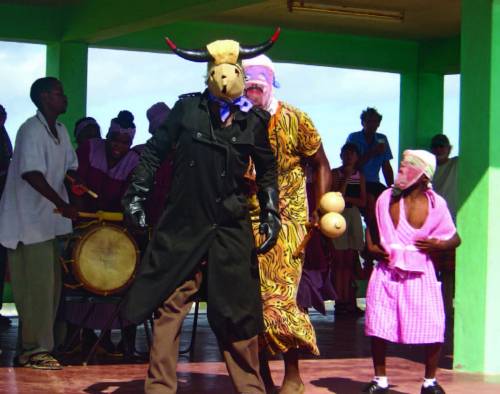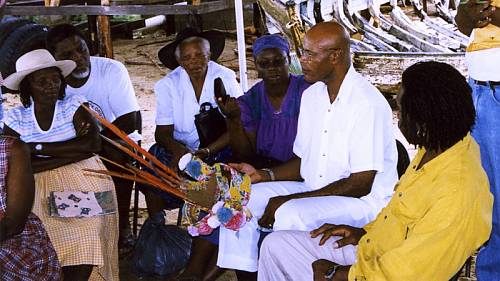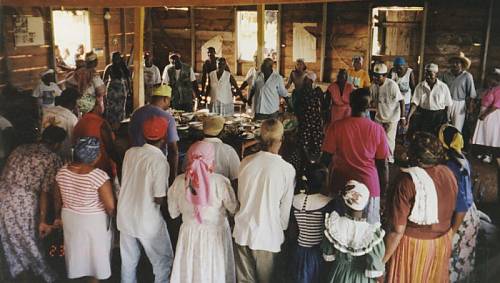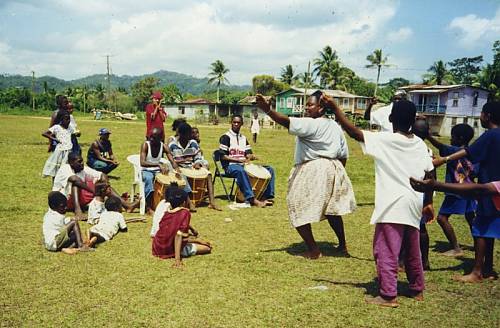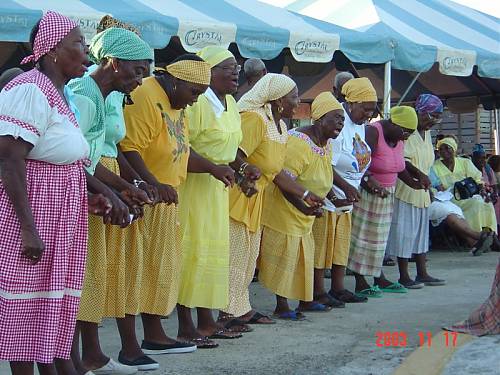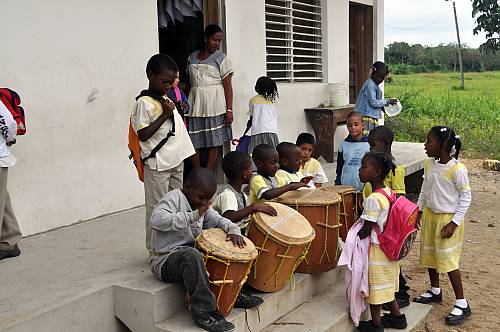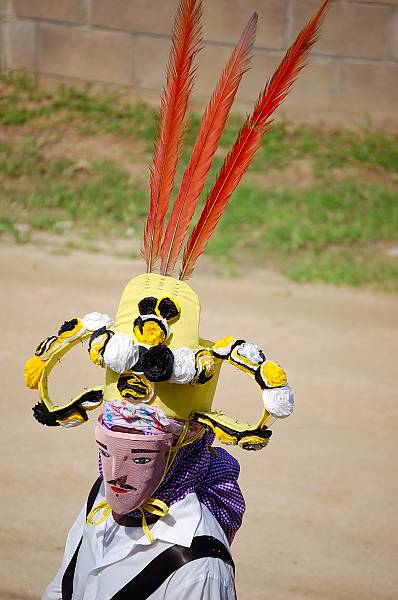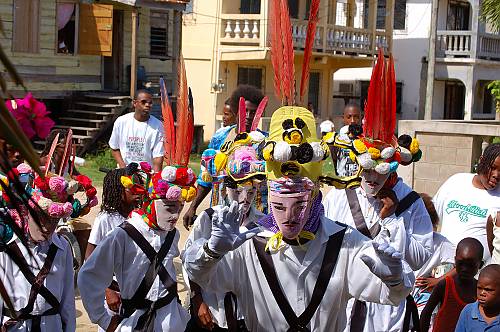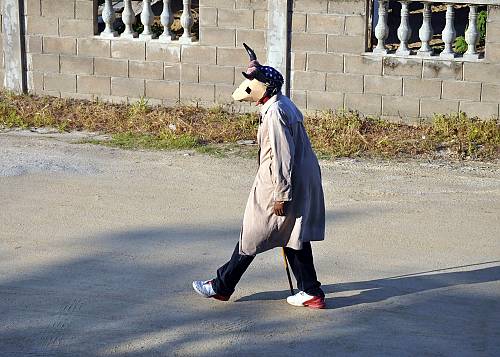Language, dance and music of the Garifuna
Belize, Guatemala, Honduras and Nicaragua
Inscribed in 2008 (3.COM) on the Representative List of the Intangible Cultural Heritage of Humanity (originally proclaimed in 2001)
A population of mixed origin incorporating cultural elements of indigenous Caribbean and African groups, the Garifuna settled along the Atlantic coast of Central America after being forced to flee from the Caribbean island of Saint Vincent in the eighteenth century. Today, Garifuna communities mainly live in Honduras, Guatemala, Nicaragua and Belize.
The Garifuna language belongs to the Arawakan group of languages and has survived centuries of discrimination and linguistic domination. It is rich in tales (úraga) originally recited during wakes or large gatherings.The melodies bring together African and Amerindian elements, and the texts are a veritable repository of the history and traditional knowledge of the Garifuna, such as cassava-growing, fishing, canoe-building and the construction of baked mud houses. There is also a considerable amount of satire in these songs, which are accompanied by various drums and dances, which the spectators may join in.
These traditions are still very important to the life and survival of the Garifuna people. The elders are the ones who maintain many of the ceremonies, festivals and oral traditions. However, economic migration, discrimination and the complete absence of the Garifuna language from the school system are endangering its survival. Although the language is still widely spoken, it is now taught in only one village.

